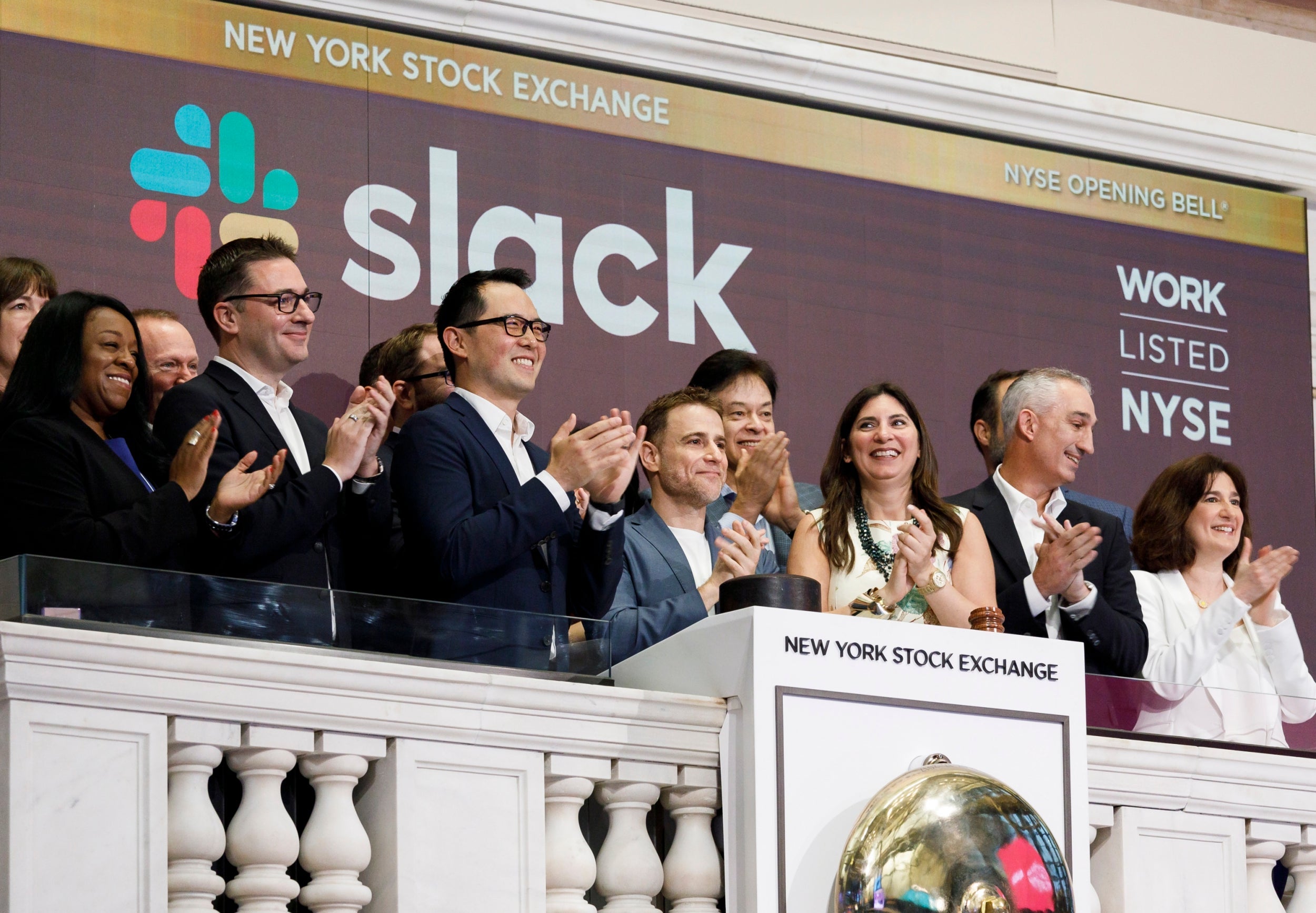Slack and Amazon to partner amid competition from Microsoft Teams
Slack will move its Calls capability to Amazon Chime, as well as using Amazon Web Services for its storage and machine learning needs

Your support helps us to tell the story
From reproductive rights to climate change to Big Tech, The Independent is on the ground when the story is developing. Whether it's investigating the financials of Elon Musk's pro-Trump PAC or producing our latest documentary, 'The A Word', which shines a light on the American women fighting for reproductive rights, we know how important it is to parse out the facts from the messaging.
At such a critical moment in US history, we need reporters on the ground. Your donation allows us to keep sending journalists to speak to both sides of the story.
The Independent is trusted by Americans across the entire political spectrum. And unlike many other quality news outlets, we choose not to lock Americans out of our reporting and analysis with paywalls. We believe quality journalism should be available to everyone, paid for by those who can afford it.
Your support makes all the difference.Slack has signed a multi-year agreement with Amazon, allowing the company to move its Slack Calls capability for voice and video calling to Amazon Chime, the shopping behemoth’s business communication service.
Slack, meanwhile, will be using Amazon Web Service more, as its cloud provider and “storage, compute, database, security, analytics, and machine learning” source to develop new collaboration features, according to an announcement from the companies.
Such a move links Slack more deeply with Amazon’s back end, specifically Amazon Web Services, which means that it is less likely the company will seek deeper integration with competing services such as Google Cloud. Slack has been running on AWS since 2014, with the company now paying Amazon at least $425 million over a five-year period that ends April 2025.
This is an increase from a previous payment of at least $250 million, which ending in July 2023, according to a US SEC (Securities and Exchange Commission) filing.
Amazon is the second largest employer in the United States, with over 840,000 employees working for the company either full- or part-time. At the end of December 2018, it was reported that Amazon has over 20,000 people working in its warehousing and logistics departments in the UK, a massive increase from its under-3000 staff in 2010.
It is unclear exactly how many of its employees will be using Slack, although it could be considerably more than the communication company has previously handled from any one employer. Previously, Slack’s largest client was IBM, providing its software to the technology giant’s 330,000 employees.
The move also comes as Slack faces increasing competition from Microsoft and its Teams service, with the CEO of Slack Stewart Butterfield saying that Microsoft is “is perhaps unhealthily preoccupied with killing us, and Teams is the vehicle to do that.“
The reason for this is, according to Butterfield, is that Microsoft’s Office business is threatened because of collaboration projects over email.
If “Slack is incredibly successful over the next two years … it does matter to Microsoft because the relative importance of email is hugely diminished. If email becomes less important, then that whole $35, $40 billion-a-year collaboration productivity business unit is threatened," Mr Butterfield said.
In a press release about Microsoft Team's daily active users, Microsoft directly compared its 13 million users to Slack's 10 million. In an interview Brian Goode, head of Office 365, has said that while he has a “great deal of respect for [Slack] as a competitor .. I feel really good about our value proposition to our customer, and what we have to offer.”
“The future of enterprise software will be driven by the combination of cloud services and workstream collaboration tools,” said Butterfield in a statement after the Aazon deal was announced. “Strategically partnering with AWS allows both companies to scale to meet demand and deliver enterprise-grade offerings to our customers.
“By integrating AWS services with Slack’s channel-based messaging platform, we’re helping teams easily and seamlessly manage their cloud infrastructure projects and launch cloud-based services without ever leaving Slack.”
Amazon said that the partnership could bring more ways for customers to work in the cloud.
“Together, AWS and Slack are giving developer teams the ability to collaborate and innovate faster on the front end with applications, while giving them the ability to efficiently manage their backend cloud infrastructure,” said Andy Jassy, CEO of AWS.
“AWS customers gain a powerful new means of managing their AWS resources that will help teams collaborate and build more applications using the broadest and deepest set of cloud services. We look forward to working with Slack to expand the ways we can help our customers innovate in the cloud.”
Join our commenting forum
Join thought-provoking conversations, follow other Independent readers and see their replies
Comments